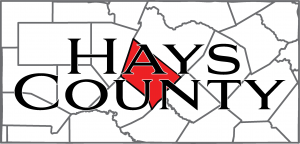With the approval of a developed master drainage plan in April 2017, Kyle aims to contain future areas prone to flooding.
The master plan is scheduled to be completed by the summer, and the project is currently being developed by Halff Associates Inc., an Austin based company that will create a matrix outlying potential costs and areas that need drainage improvement.
The contracted plan with Halff Associates will cost a maximum $177,500, which has already been accounted for in the city’s bu...
With the approval of a developed master drainage plan in April 2017, Kyle aims to contain future areas prone to flooding.
The master plan is scheduled to be completed by the summer, and the project is currently being developed by Halff Associates Inc., an Austin based company that will create a matrix outlying potential costs and areas that need drainage improvement.
The contracted plan with Halff Associates will cost a maximum $177,500, which has already been accounted for in the city’s budget in the drainage utility fund. The drainage master plan will help city engineers decide where to implement capital improvement programs (CIP).
CIP projects would vary in size and cost. If a damaged drainage pipe can be fixed with a small crew, the city could inhouse that service. For larger, more costly projects, outsourcing contract work by the city could be a viable solution.
“When I came here in 2013, we didn’t have a drainage master plan and our city was a lot smaller … As we’ve grown, we’ve learned that this city needs to do a better job at planning, and that’s what we’re looking to accomplish here.” Leon Barba, Kyle city engineer
“The master plan is going to look at areas that we know have major or minor drainage issues and put that data into perspective,” said Leon Barba, engineer for the city of Kyle. “It’ll outline potential budget costs and time.”
During the 2015 Memorial Day Flood, more than 1,000 Hays County residents were displaced from their homes, leaving community leaders in San Marcos, Kyle and Wimberley looking for solutions to combat future disasters.
Nick Dornak with the Plum Creek Watershed Partnership, said that Kyle’s population growth and added pavement and rooftops contributed to the heavy amounts of runoff during the flood.
“When I came here in 2013, we didn’t have a drainage master plan and our city was a lot smaller,” Barba said. “As we’ve grown, we’ve learned that this city needs to do a better job at planning, and that’s what we’re looking to accomplish here.”
Residential areas and busy streets will be looked at first when the master plan is complete. Bigger, more costly projects will be financed through the city after future deliberation has taken place.
“The city can’t afford to pay for these bigger projects at once,” Barba said. “For example, a $10,000,000 project will be put in a five to ten year plan to help with funding, and all of these factors will be outlined in the data provided by Halff Associates.”
Without having the recommendations from Halff Associates along with the project details and possible solutions, it is difficult to comment on the potential costs and timeliness of the projects, said Kathy Roecker, stormwater management plan administrator for the city of Kyle.
Halff Associates has outlined master plans for other cities, and the company’s experience was a major factor in council’s decision to approve the initiative, Barba said.
Once the master plan is complete, the city will look at specific areas of interest that can be targeted for the rest of 2018 with the remaining budget. More costly projects will be moved into 2019 when the new city budget is available and financed accordingly.
“I’m looking most forward to viable, long-term solutions to the city’s current drainage infrastructure as well as future planning strategies and solutions to mitigate future flooding as the city continues to grow,” Roecker said.














